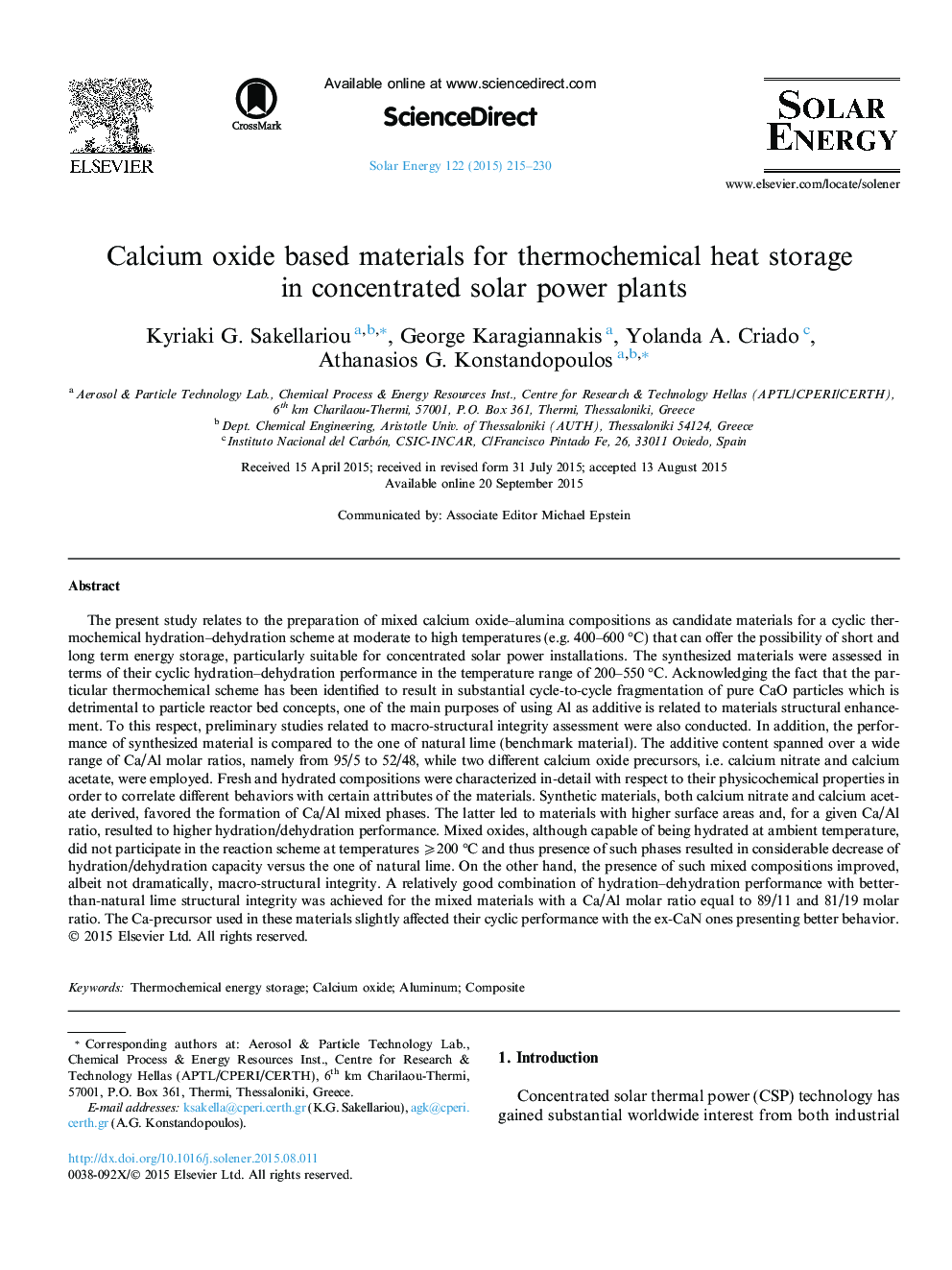| Article ID | Journal | Published Year | Pages | File Type |
|---|---|---|---|---|
| 1549576 | Solar Energy | 2015 | 16 Pages |
•Substantial fragmentation of pure CaO particles upon hydration–dehydration.•Aluminum doping slightly improved macro-structural integrity of materials.•Measurable decrease of hydration capacity for Ca/Al materials with high Al content.•Good hydration–dehydration performance with improved structural integrity achieved.
The present study relates to the preparation of mixed calcium oxide–alumina compositions as candidate materials for a cyclic thermochemical hydration–dehydration scheme at moderate to high temperatures (e.g. 400–600 °C) that can offer the possibility of short and long term energy storage, particularly suitable for concentrated solar power installations. The synthesized materials were assessed in terms of their cyclic hydration–dehydration performance in the temperature range of 200–550 °C. Acknowledging the fact that the particular thermochemical scheme has been identified to result in substantial cycle-to-cycle fragmentation of pure CaO particles which is detrimental to particle reactor bed concepts, one of the main purposes of using Al as additive is related to materials structural enhancement. To this respect, preliminary studies related to macro-structural integrity assessment were also conducted. In addition, the performance of synthesized material is compared to the one of natural lime (benchmark material). The additive content spanned over a wide range of Ca/Al molar ratios, namely from 95/5 to 52/48, while two different calcium oxide precursors, i.e. calcium nitrate and calcium acetate, were employed. Fresh and hydrated compositions were characterized in-detail with respect to their physicochemical properties in order to correlate different behaviors with certain attributes of the materials. Synthetic materials, both calcium nitrate and calcium acetate derived, favored the formation of Ca/Al mixed phases. The latter led to materials with higher surface areas and, for a given Ca/Al ratio, resulted to higher hydration/dehydration performance. Mixed oxides, although capable of being hydrated at ambient temperature, did not participate in the reaction scheme at temperatures ⩾200 °C and thus presence of such phases resulted in considerable decrease of hydration/dehydration capacity versus the one of natural lime. On the other hand, the presence of such mixed compositions improved, albeit not dramatically, macro-structural integrity. A relatively good combination of hydration–dehydration performance with better-than-natural lime structural integrity was achieved for the mixed materials with a Ca/Al molar ratio equal to 89/11 and 81/19 molar ratio. The Ca-precursor used in these materials slightly affected their cyclic performance with the ex-CaN ones presenting better behavior.
